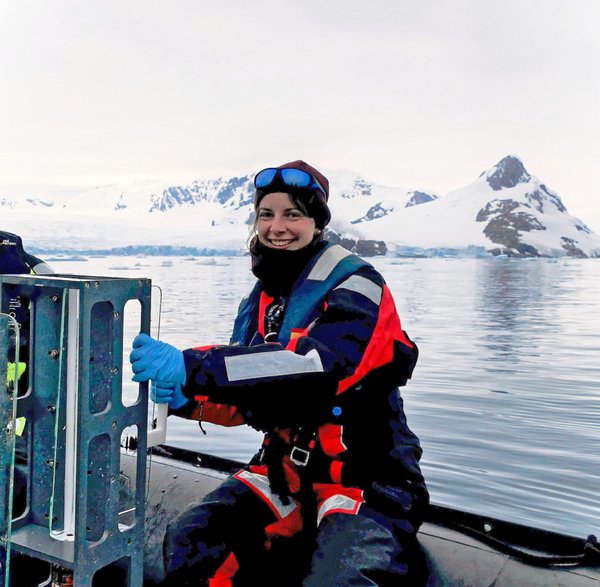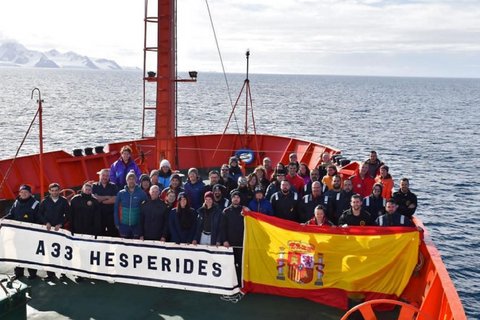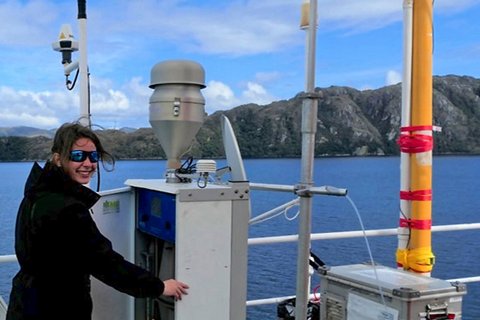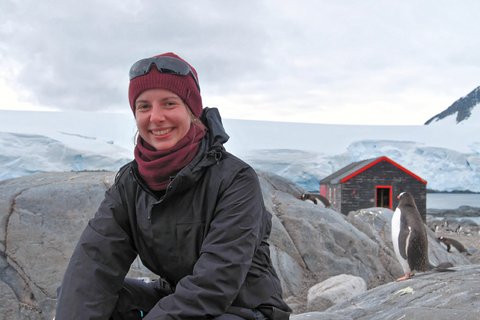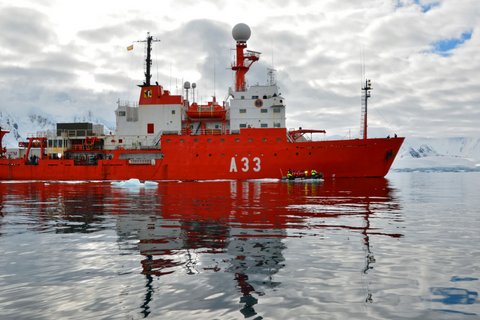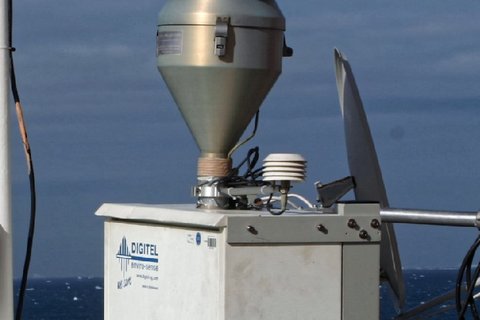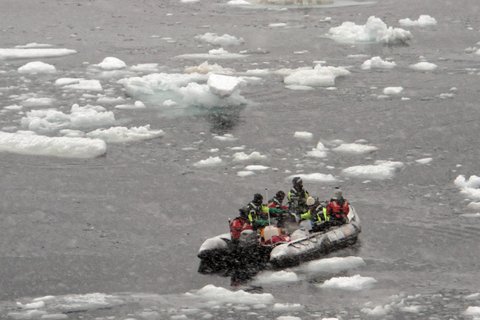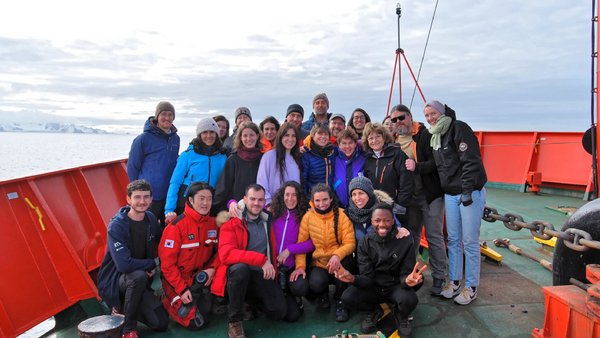Polar Change 2023
About the campaign
The Spanish-lead ship campaign Polar Change consists of an international, multidisciplinary team with 33 scientists and technicians from 14 different nations. It took place between February and march 2023 around the Antarctic Peninsula and focused on aerosols produced in a marine environment. The campaign is carried out on the spanish research vessel B.I.O Hespérides, assisted by the Ministry of Science and Innovation of Spain. Additional to the scientists, up to 57 crewmembers from the Spanish Armada are part of the ship. Competences in plankton ecology, ocean-atmosphere biogeochemistry and atmospheric chemistry ensured a variety of data.
TROPOS at Polar Change
During the Polar Change campaign, our main goal as TROPOS was to gain further insight in the transfer of amino acids (AA), either as combined (CAA) or as free AA (FAA), from the uppermost layer of the ocean, the sea surface microlayer (SML) onto aerosol particles (AP). AA can act as cloud condensation nuclei (CCN) or ice nucleating particles (INP) and are therefore interesting for the formation of different kinds of clouds and thereby influencing the climate.
For the investigation of this transfer process, concurrent measurements were conducted, on the one hand SML sampling with the glass plate technique, on the other hand AP sampling with both a high-volume DIGITEL sampler and a size-segregated low-volume BERNER sampler. Both samplers were coupled to a wind sensor to ensure that no ship exhaust was sampled, which is crucial to ensure sampling of clean, ambient Antarctic air, a model for preindustrial air.
Living on a ship in Antarctica
For me, the work was divided in an outside part, consisting of SML sampling with a zodiac and looking after the aerosol samplers, and an inside part where the sample processing happened. Luckily, the weather was mostly pleasant enough to sample and even the feared Drake channel in the beginning did not lead to lasting sea sickness.
Next to work, international character, combined with the military crew gave a unique mixture of characters and interactions in daily live. After the weeks on board, the people felt more like a family then colleagues. All the meals and hardship shared, ranging from bathroom issues to orcas while ice core sampling, lead to a bond, that one never thought to have in the first place. When thinking about Antarctica, one does not imagine drinking mate in the sun in the morning and visiting beautiful landscapes and penguins in the afternoon but, amazingly, that was also part of Polar Change.
Christina Breitenstein

